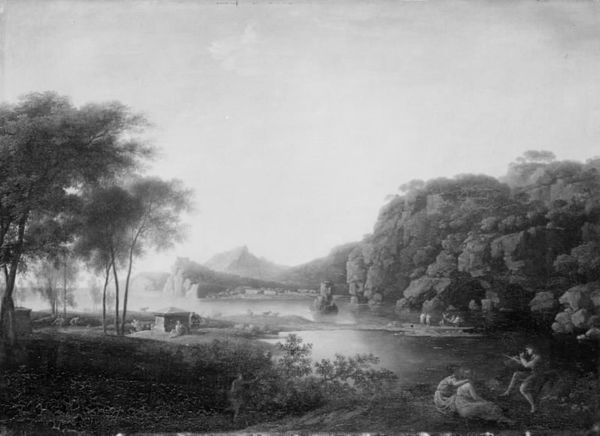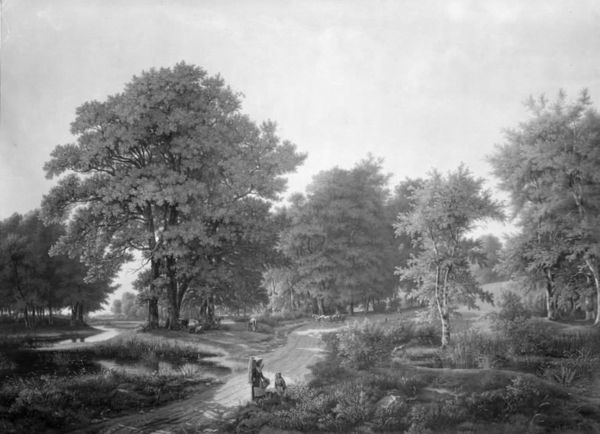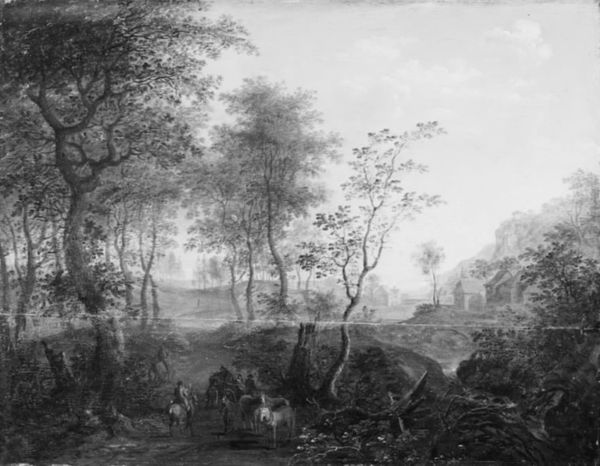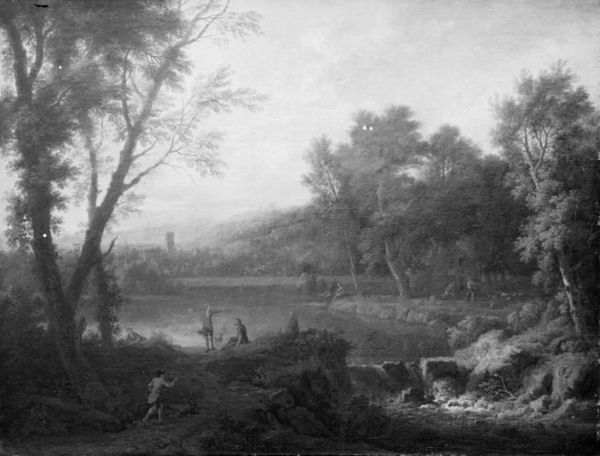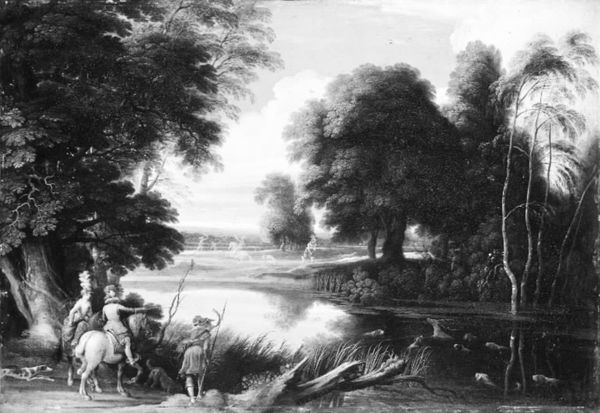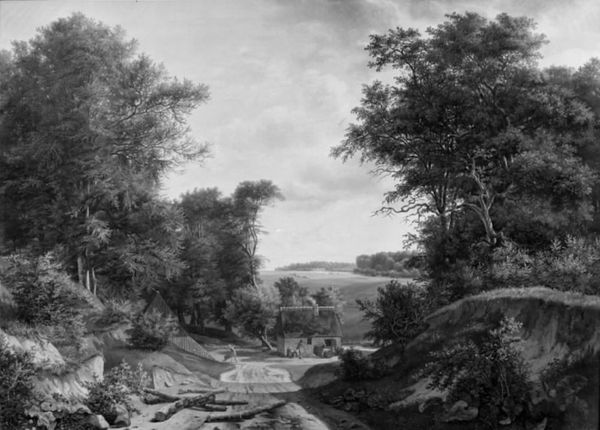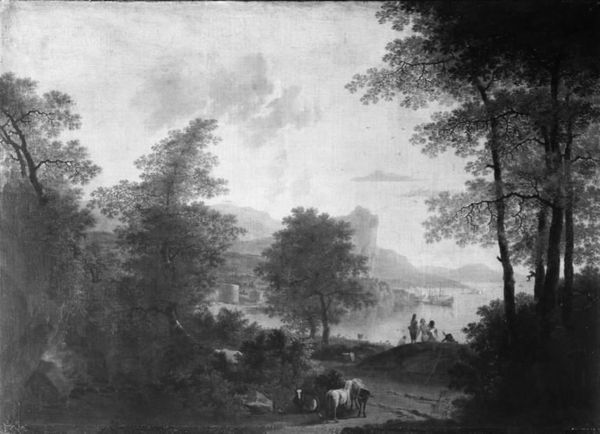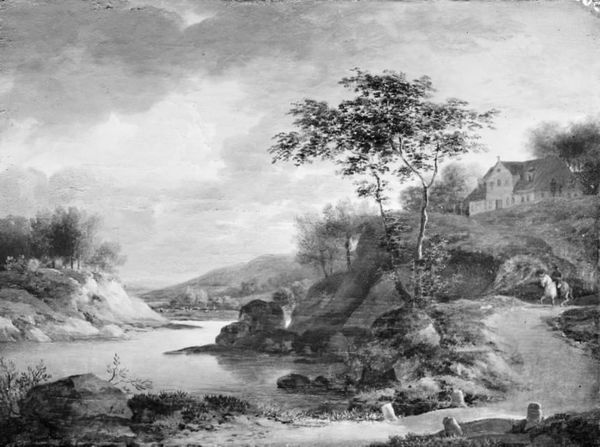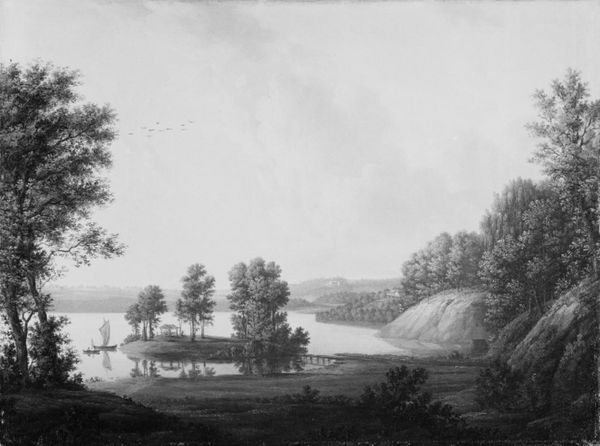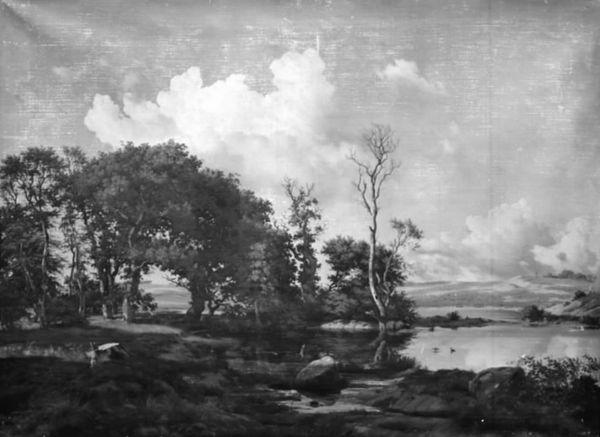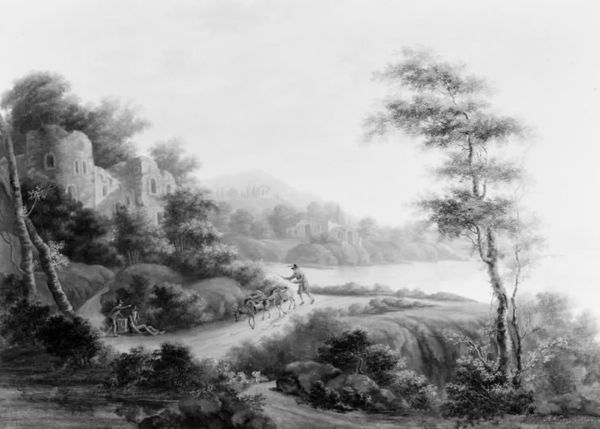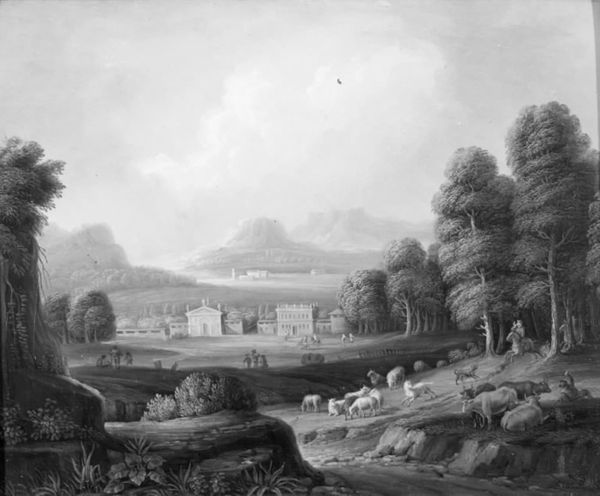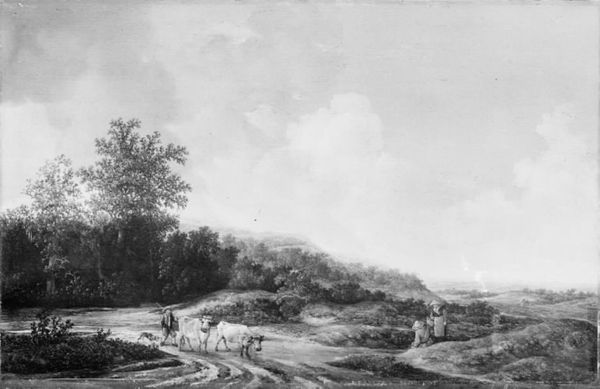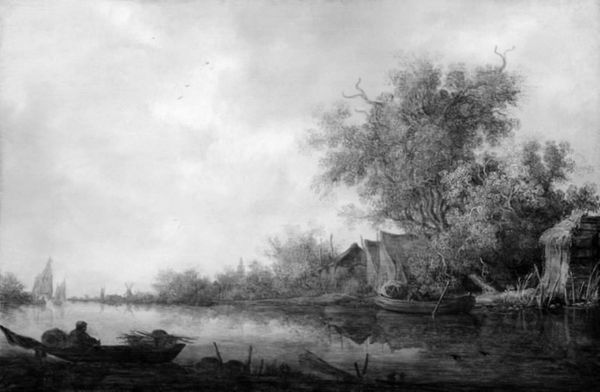
Dimensions: 49 cm (height) x 71 cm (width) (Netto)
Curator: Erik Pauelsen’s charcoal drawing, "Landscape with a Lake," completed between 1764 and 1790, offers a fascinating glimpse into the artistic landscape of late 18th-century Denmark. Editor: My first impression is its tonal range—the artist has created such a strong sense of depth with only subtle shifts in the gray scale. The arrangement is very calculated: light and dark work as much together as separate forms. Curator: Yes, and that's where it becomes intriguing when considering the period's sociopolitical milieu. These landscapes weren’t merely aesthetic exercises. They also articulated ideologies about land ownership, national identity, and even social hierarchy. Look closely at the figures. Who do you think they represent? Editor: They are set somewhat off to the left in a grouping that could either appear posed or nonchalant, but they are proportionally diminutive compared to the scale of the overall landscape. Curator: Exactly! In portraying everyday life against the vastness of nature, there's commentary on human experience, our relationship to the environment, and potentially, class structures within society. Remember, Denmark during that time was navigating significant political and social reforms. Editor: You're framing the picture as a kind of coded document. Still, when I study how Pauelsen renders those distant trees, almost dissolving into mist, I wonder if it expresses a more existential sensibility rather than specific social critiques. The execution is amazing: it reflects an emotive effect by using shadow to indicate forms or just subtle lighting effects to indicate a figure without clearly drawing every portion. Curator: Both angles contribute meaningfully to our comprehension of the piece. Its strength as an artwork comes from simultaneously performing those operations. It can elicit emotion but also can be analyzed for the symbols contained within, making us ponder power and landscape in that period of transformation. Editor: Indeed. It's clear there's both technical skill and a conceptual framework underpinning it, inviting endless conversation about nature, feeling, and meaning. Curator: It serves as an intersection between the visual beauty we see, as you point out, and broader dialogues about historical context, identities, and socio-political narratives, wouldn't you agree?
Comments
No comments
Be the first to comment and join the conversation on the ultimate creative platform.
